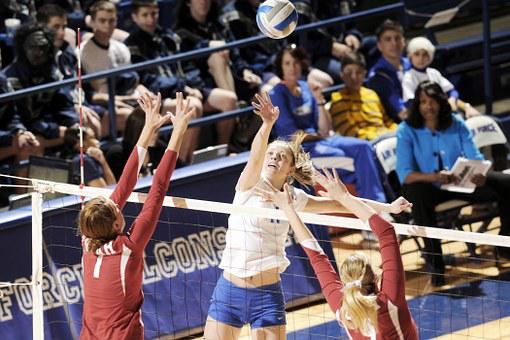General Rules of Ampute Football
Amputee football, also known as amputee soccer, is a sport played by people who have had one or more limbs amputated. It is believed that the first amputee football match took place in the early 1950s in the United Kingdom, but the sport has roots dating back to the First World War, when injured soldiers would play informal games of football as a form of rehabilitation.

The first official amputee football tournament was held in 1974 in the Netherlands, and the first World Cup was held in 1998 in Holland. Today, amputee football is played in over 60 countries around the world, and there are national teams representing many countries.
Amputee football is played on a smaller field and with a smaller ball than regular football, and there are some variations in the rules to accommodate the players’ physical differences. The sport is overseen by the International Committee of Amputee Football (ICAF), which works to promote and develop the sport globally.
Scoring in Amputee Football
In amputee football, points are scored by kicking the ball into the opponent’s goal. The team that scores the most goals wins the match.
There are some variations in the rules of amputee football depending on the level of competition and the governing body overseeing the match. However, the basic rules for scoring are as follows:
A goal is scored when the ball crosses the goal line between the goalposts and under the crossbar, provided the ball was last touched by a player from the attacking team.
A goal cannot be scored directly from a throw-in, corner kick, or goal kick.
If the ball hits the ceiling or any other object above the field of play, it is considered out of bounds and a goal kick is awarded to the opposing team.
If the ball hits the floor outside the field of play, it is considered out of bounds and a corner kick or goal kick is awarded depending on which team touched the ball last.
In a match, the team with the most goals at the end of the game is declared the winner. If the game is tied, it may go into extra time or be decided by a penalty shootout.
Common Terminologies in Amputee Football
Amputee football, also known as amputee soccer, is a variant of association football that is played by athletes who have had one or more limbs amputated. Here are some common terminologies that are used in amputee football:
- “Amputee football” or “amputee soccer”: The sport itself, which is a variant of association football played by athletes with amputations.
- “Prosthesis”: An artificial device that is used to replace a missing limb. Many amputee football players use prostheses to enable them to participate in the sport.
- “Running blades”: A type of prosthesis that is specifically designed for running and other high-impact activities. Many amputee football players use running blades in place of their missing legs.
- “Kick-off”: The start of a match, when the ball is placed in the center of the field and the teams line up on their respective sides.
- “Corner kick”: A kick that is taken from the corner of the field when the ball has gone out of bounds over the goal line after being last touched by the defending team.
- “Free kick”: A kick that is awarded to a team when a foul is committed by the opposing team.
- “Penalty kick”: A kick that is awarded to a team when a foul is committed inside the penalty area.
- “Goal”: The area in which the ball must be kicked in order to score a point.
- “Offside”: A rule that prohibits players from being in a position to receive the ball from a teammate who is closer to the opposing team’s goal line than both the ball and the second-to-last opposing player.
Penalties in Amputee Football
In amputee football, penalties are awarded for fouls or infractions of the rules that are committed by a player or team. Some common penalties in amputee football include:
- Free kick: A kick that is awarded to a team when a foul is committed by the opposing team. The ball is placed on the spot where the foul occurred, and the opposing team must retreat to a certain distance from the ball until the kick is taken.
- Penalty kick: A kick that is awarded to a team when a foul is committed inside the penalty area (a large rectangular area in front of the goal). The ball is placed on the penalty spot (a small mark inside the penalty area), and the kicker takes the kick while all other players must remain outside the penalty area until the kick is taken.
- Yellow card: A caution given to a player who commits a foul or behaves in a way that is deemed unsportsmanlike by the referee. A player who receives two yellow cards in a single match is shown a red card and is sent off (ejected from the game).
- Red card: An ejection from the game that is given to a player who has committed a serious foul or has behaved in a way that is deemed unacceptable by the referee. A player who is shown a red card must leave the field and may not be replaced for the remainder of the match.
10 General Rules of Amputee Football
Amputee football is played according to rules that are similar to those of association football (soccer). Here are 10 general rules of amputee football:
- The game is played by two teams of seven players, including a goalkeeper.
- Players are not allowed to use their prostheses to touch the ball, with the exception of the goalkeeper, who may use their prostheses to catch or deflect the ball within their own penalty area.
- Players may not use their prostheses to block or tackle an opponent, or to gain an advantage in any way.
- The ball may not be kicked out of bounds over the touchline (sideline) by a player’s prosthesis.
- The ball is out of play when it fully crosses the goal line or touchline.
- The team that scores the most goals wins the game. If the score is tied at the end of regulation time, the game may be decided by a shootout or extra time.
- The goalkeeper is the only player who is allowed to touch the ball with their hands within their own penalty area.
- Fouls and infractions of the rules are punished with free kicks, penalty kicks, or cards (yellow or red).
- The referee is the final authority on all decisions related to the game.
- The rules of the game may be modified to accommodate the specific needs and abilities of amputee football players.
I hope this helps! Let me know if you have any other questions.






